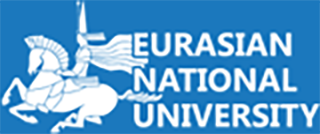Abstract
Radon is a noble gas that is one of the natural radioactive decay products of radium resulting from the disintegration of uranium. Humans are exposed to sources of natural radiation activity, being radon and its progeny breathing air responsible for more than 50% of the annual dose received from natural radiation. The aim of this study was to determine the radon concentration in the air in settlements’ dwellings and social objects and calculate the annual effective dose of population from radon on the territory mining activities in Stepnogorsk area. The study has shown that activity concentrations of indoor radon in the buildings ranged from 8 to 870 Bq · m ��3 in Aqsu, 3-540 Bq · m ��3 in Kvartsitka located close to former gold mining sites. The Einh corresponding to the activity concentrations ranged from 1-27 mSv · y ��1 received by the settlements’ public. The highest value of Einh in Aqsu School reaches up to 68 mSv · y ��1 received by the critical group of public was found at the territory of former mining the Stepnogorsk area. The results of this study show significant radiation hazards in Aqsu School which located at the territory of former mining site, and there is evidence of radon health risk to the members of the public.
Article Type
Original Study
First Page
344
Last Page
350
Creative Commons License

This work is licensed under a Creative Commons Attribution 4.0 International License.
Recommended Citation
Ibrayeva, D. S.; Aumalikova, M. N.; Ilbekova, K. B.; Bakhtin, M. M.; and Kazymbet, P. K.
(2020)
"Determination of radon levels in dwellings and social objects and evaluation annual effective dose from inhalation of radon in Stepnogorsk area Northern Kazakhstan,"
Eurasian Journal of Physics and Functional Materials: Vol. 4:
No.
4, Article 8.
DOI: https://doi.org/10.29317/ejpfm.2020040408

